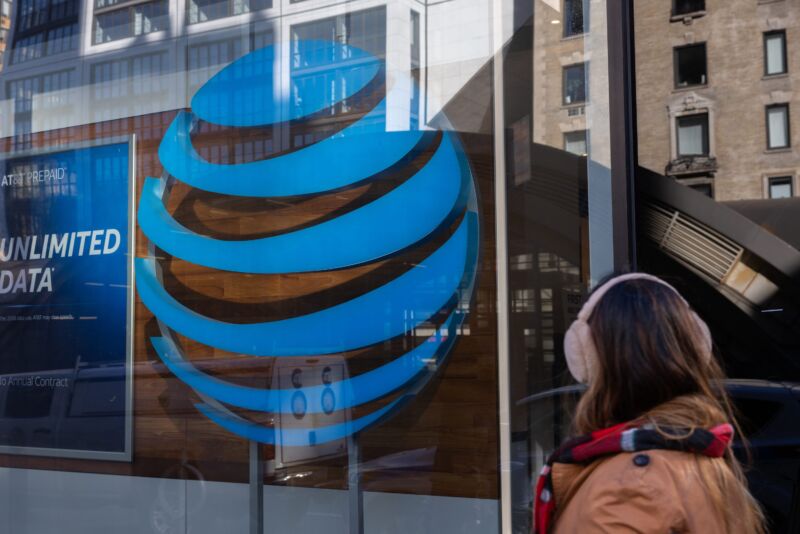
Getty Images | Bloomberg
AT&T is now charging mobile customers an extra $7 per month for faster wireless data speeds. AT&T says the Turbo add-on, available starting today, is “built to support high-performance mobile applications, like gaming, social video broadcasting and live video conferencing, with optimized data while customers are on the go.”
While Turbo “boosts all the high-speed and hotspot data on a user’s connection,” AT&T said the difference will be more noticeable for certain kinds of applications. For example, gaming applications using Turbo will experience “less freezing or stuttering and lower latency,” AT&T said.
The $7 charge is for each line. Adding Turbo to multiple lines on the same account requires paying the extra fee for each line. AT&T said that Turbo lets users “optimize their plan’s high-speed (premium) and hotspot data allotments” and provides better data performance “even during busy times on the network.”
Turbo is only available for 5G phones on certain “unlimited” plans. AT&T notes that “Turbo does not provide extra data” and that “if you exceed your existing allotments your normal network management applies.”
“On AT&T Unlimited Extra EL after 75GB, AT&T may temporarily slow data speeds if the network is busy,” the company says. “On each eligible plan, after you exceed your hotspot allotment, your hotspot speeds are slowed to a maximum of 128Kbps.”
People who pay extra for Turbo might want to look at their video settings. By default, AT&T limits video streaming to DVD quality, but customers can turn on high-definition video at the expense of using more data.
Quality of service
An article by The Mobile Report said that AT&T will differentiate between users who pay for Turbo and those who don’t with Quality of Service Class Identifiers, or QCIs. “We’re told that, basically, all eligible plans are now moved to QCI 8, and get the privilege of buying their way back into QCI 7,” the article said. QCI 6 is reportedly reserved for public safety professionals on the FirstNet service built by AT&T under a government contract.
AT&T confirmed to Ars today that Turbo “is assigned to a QCI to which some of our consumer traffic was previously assigned.” But AT&T said it has “materially modified it and increased network resources and relative weighting for AT&T Turbo traffic, thereby creating a higher level of performance than we’ve ever before offered to consumers.”
AT&T also said that QCIs “are simply a number assigned to a class of service,” and that the “treatment and performance of traffic in a particular class is affected by a range of variables that can be tuned to provide different experiences.” AT&T said that last summer, it “rationalized and streamlined how our plans are mapped to QCI levels” and that “these changes helped optimize network performance for our overall customer base.”
The current version of Turbo may be followed by other paid extras that enhance performance, as AT&T called it the “first step in modernizing and preparing our mobile network for future innovative use cases… Latency-sensitive applications will continue to need more enhanced network technologies to perform their best, so we plan to continue to advance and evolve AT&T Turbo.”